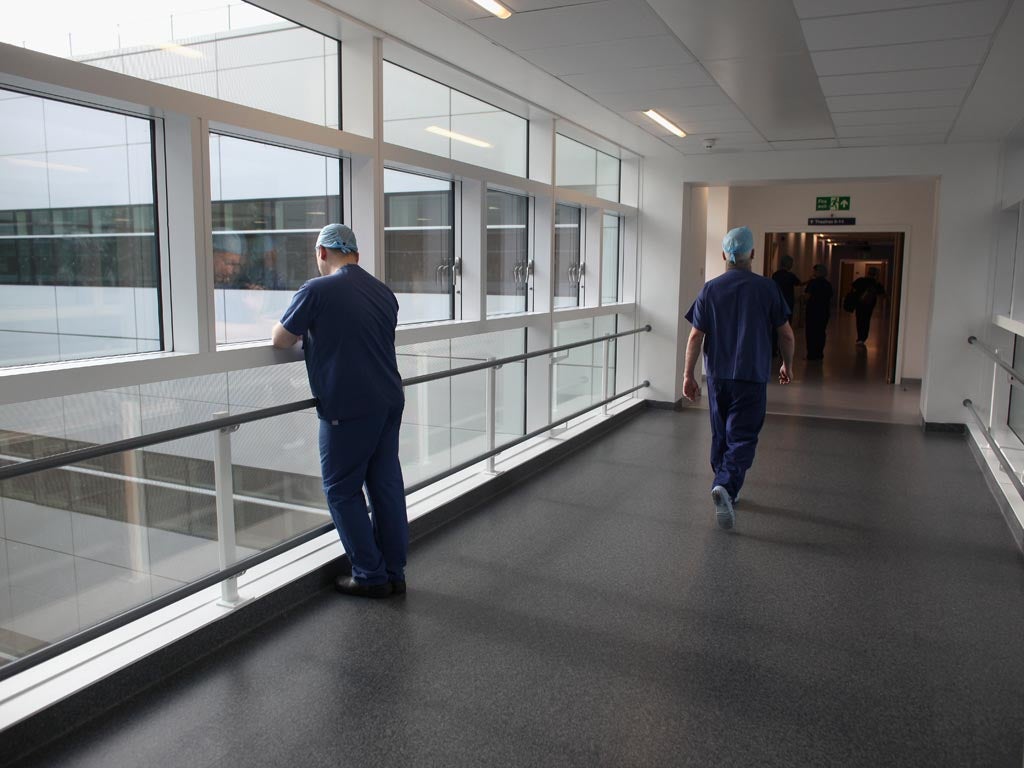In sickness and in health: Why good hospital art is more important than you think
Earlier this year, Rebecca's husband, Nick, was hit by a car and seriously injured. Here, in one of a series of columns, she writes about the aftermath of his accident

Last week, my stepdaughter went to the Tate Modern. She's recently been allowed an Instagram account and, apart from cat pictures and selfies, she's filled it with snapshots and critiques of the artworks she saw there. Ceramics that "looked like poo"; a Soviet-style propaganda poster with an emaciated ironworker - AKA "Voldemort", and a Picasso that made her laugh so much that "everyone stared". Like her, I've been surrounded by art recently and have been interpreting it just as idiosyncratically.
To be fair to Pablo, though, most of the works that I've seen haven't yet been granted masterpiece status. Over the course of spending time in three hospitals (and counting), I've been exposed to the good, the bad and the homely of hospital art, created by professionals as well as dabblers. At the entrance to the first hospital that Nick was admitted to, there was a bronze sculpture of a man that I never could work out. Was that a helmet on his head? Why did he look so melty? But as I was always either rushing in to see Nick, or trudging tearfully out to go home, I never had the energy to find out.
Inside, things were much better - bright stripes by Bridget Riley adorned the walls of the corridor that led to Nick's bed, clinically straight, but cheerfully hued. In the waiting room was a slightly foxed mosaic of seagulls. I liked the soothing greys and off-whites of that. When Nick was moved to another institution, I felt thoroughly discombobulated. As I stalked through the entrance to visit him for the first time, the paintings by a local art group that adorned the walls were an affront. I thought they were hideously amateurish and made me lose what little faith I had in this horrible, unfamiliar hospital. Annoyed cats; Venice looking particularly wet and technicolour mediterranean scenes: they made me rage inside.
Later, once I'd made peace with Nick being there and found faith in the care he was receiving, I thought the pictures and the ones that subsequently joined them cheering, like friends. I even considered buying one or two, but I'm not sure I could live with a painting so tainted with such a ghastly time.
A friend who was treated for breast cancer a few years ago told me that the ward in the hospital that she visited was decorated with pictures of birds. She's no ornithologist, but she's pretty sure that they're tits. I do hope so. I also hope that hospitals continue to decorate their walls - it might seem strange for them to be concerned with art, but to look on something that isn't functional at desperate times can give a strange sort of serenity.
At Nick's most recent hospital, getting to know the art has been as important to me as working out when the coffee shop's open. I love the intentionally shredded portrait of an 18th-century lady, and the blocky landscapes in an adjoining corridor bring a much-needed sense of space. Follow the landscapes, and you get to a hallway hung with overbearing oil paintings of the adjacent hospital's founding fathers. Even those have a certain appeal in that they take my thoughts away from this moment, and give me a brief, welcome respite from worry as I think, is it just me, or does that doctor look just like Professor Snape?
Twitter: @rebeccaj
Join our commenting forum
Join thought-provoking conversations, follow other Independent readers and see their replies
Comments